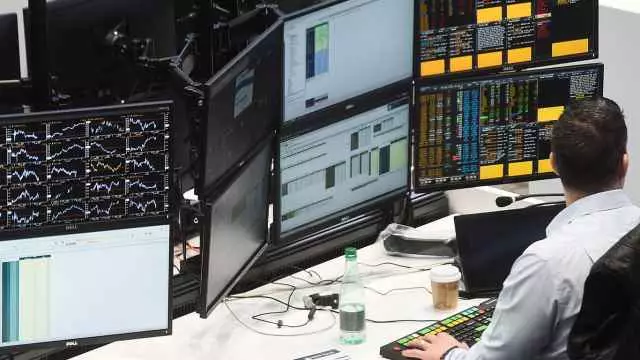
"Enough to wait, it's time to buy" - so wrote this week about the ruble of the Morgan Stanley strategist James Lord and Philip Denchev. The Russian currency can strengthen 6% by reducing the risk of approximately 75%, they consider it, and therefore it is recommended to occupy long positions in the ruble in an equal proportion against the dollar and the euro.
The draft law on the sanctions "for Navalny", introduced into the US Congress, is expected, does not carry macroeconomic risks, and the ruble in the meantime, it is advantageous in comparison with currency-counterparts and have not played the jump in oil prices, they write.
We decided to find out from experts from other companies, Western and Russian, whether they share such optimism.
"We have been looking positive on the ruble for some time," says the Managing Director for Strategic Development "Aton Management" Grigory Isaev. This is due to the fact that the economy of Russia showed itself better expectations last year, as well as with the increase in prices for resources, which may continue in 2021 as the global economy recovered after a pandemic, he explains.
"Ruble is a good rate from the point of view of risk / return," the senior analyst "Sberhold Asset Management" Arthur Kopsyv agrees. With the improvement of business activity in the world of investors' interest in the assets of developing countries will increase, which will lead to a smooth strengthening of many currencies of emerging markets in relation to the dollar, it believes. There will be no exception and ruble, including due to the increase in oil prices, he says, waiting by the end of the year the course not higher than 73 rubles / $.
During the year, the course can strengthen and stronger - up to 70 rubles / $, according to the analysis of financial markets and macroeconomics of Alfa-Capital Management, Vladimir Bragin: From the point of view of macroeconomic risks, debt burden, reserves and rates ruble looks strongly undervalued by Compared to currency-analogues and in 2021, it can seriously strengthen. He sees several reasons for this: restoration of the economy and demand for oil, relatively high yield of local bonds (of course, when maintaining low inflation), the expected reduction in the new supply of OFZ compared to last year.
According to VTB Capital forecasts, the average annual exchange rate of the ruble this year will be 73.3 rubles / $, it will be tightly in the second quarter - an average of 72.9 rubles / $, says Alexander Isakov's chief economist and the CIS. "We can talk strictly and difficult to speak about the currency course, assessing the attitude of investors to specific country risks and the general risk level or a change in trade conditions, but it seems to me that I have been globally, who expressed by the Chairman of the Central Bank Elvira Nabiullina in an interview in 2014. The rule remains true: the stronger the economy The stronger the national currency, "he argues. So the current strengthening of the course is partly connected with a positive surprise on GDP figures in 2020 and gradually reassessing up the growth potential market in 2021, Isakov is sure.
Target Range of Forecasts Credit Suisse - 73-77 rub. / $. The ruble did not fall below 73 rubles. / $ For many weeks and now it is exactly this level that will most likely be basic, believes the strategist Credit Suisse on the exchange market and rates in the emerging markets of Nemrod Mevorach. At the same time, the number of jumps above 77 rubles. / $ Will decline - if relations between the United States and Russia will not worsen noticeably, and oil prices will not decline, it expects. So for investors who are ready to consider the situation in a longer-term perspective, the sale of the ruble at the top of this range will be a good compromise between risk and benefits, he summarizes.
Sanctions are not terribleSanctions are unlikely to lead to a significant weakening of the ruble, experts consider. Another regular sanction package with close attention to the media to him can return the course to 80 rubles / $, allows Bragin. "But it's not worth the fear of any serious sectoral sanctions, he doubts. Rather, we can talk about personal sanctions, and therefore, judging by how it happened before, the first shock will be gradually smoothed and the ruble will return to growth, Bragin is confident: "The market is quite quickly accustomed to the news." So it makes sense to think about increasing positions in the ruble and even with a portfolio's currency exposition to take some share on the ruble and ruble assets, it concludes.
By the end of the year, the Russian currency can significantly seek, only when implementing harsh sanctions, but the likelihood of this is small - 10%, says Isaev. So, taking into account the difference in the rates with the main world currencies, the current geopolitical premium in the ruble is redundant, he is sure.
It is not worth a hurryNevertheless, it is not allowed to increase the share of the ruble in the portfolio. According to Kopshev, the ruble tools in the portfolio will increase more effectively. He advises to increase the proportion of ruble corporate bonds - the rates on them look more attractive than rates on deposits and OFZ, and the possible strengthening of the ruble makes them even more attractive.
Analysts Deutsche Bank in a review that came out at the end of January are also waiting for the ruble smooth strengthening and still propose to wait for greater clarity in relation to internal politics in Russia, Central Bank actions (the first meeting of the key rate will be held on Friday. - VTIMES) and sustainability OPEC agreements before making a decision on investment in the ruble.
